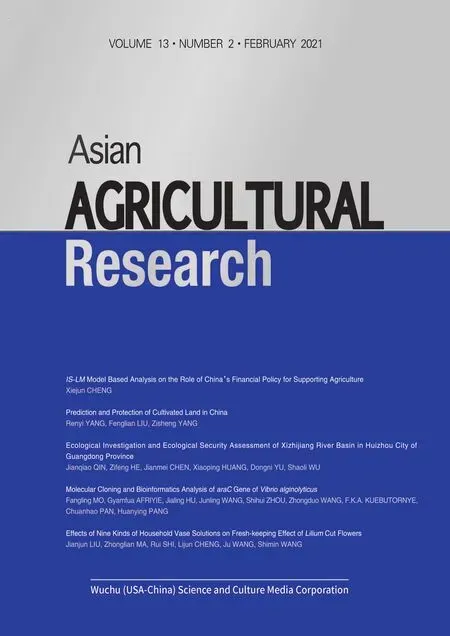Effects of Nine Kinds of Household Vase Solutions on Fresh-keeping Effect of Lilium Cut Flowers
2021-04-08JianjunLIUZhonglianMARuiSHILijunCHENGJuWANGShiminWANG
Jianjun LIU, Zhonglian MA, Rui SHI, Lijun CHENG, Ju WANG, Shimin WANG*
1. College of Agronomy and Life Sciences, Zhaotong University, Zhaotong 657000, China; 2. College of Chemistry and Chemical Engineering, Zhaotong 657000, China
Abstract [Objective] The paper was to study the effects of nine kinds of household vase solutions on fresh-keeping effect of Lilium cut flowers. [Method] Using Lilium "Sorbonne" as the material, nine kinds of household vase solutions were prepared by edible white granulated sugar, white vinegar, akafen powder and vitamin C tablets, respectively. The morphological and physiological indexes of Lilium cut flowers, including vase life, ornamental grade, flower diameter, fresh weight of flower branches, water balance value, soluble protein content and MDA content of petals, were observed, and the effects of nine kinds of household vase solutions on fresh-keeping effect of Lilium cut flowers were studied. [Result] The household vase solution F8 (20 g/L white granated sugar+1 packet/L acafen powder+2 tablets /L vitamin C tablets) had the best fresh-keeping effect on Lilium cut flowers, which was beneficial to prolong the vase life and improve the ornamental value of Lilium cut flowers. [Conclusion] The household vase solution of Lilium cut flowers is optimized, which is not only environmentally friendly but also convenient for ordinary families.
Key words Household vase solution, Lilium cut flowers, Fresh-keeping effect
1 Introduction
With the rapid development of society and economy in China, people continuously improve the pursuit of the spiritual level on the premise that material needs have been met, so household fresh cut flowers are more and more popular. Giving each other fresh cut flowers during holidays is now a way for people to express blessings and enrich spiritual and cultural lives. However, the loss rate of fresh cut flowers is as high as 30% due to the imperfect conservation measures after picking and the shortcomings that water and nutrients of cut flowers are easily maladjusted and witheredin
vitro
, which greatly reduces the ornamental value of fresh cut flowers and further reduces the purchase demand of consumers, thus affecting the development of fresh cut flower industry. The conditions can be effectively improved through fresh-keeping technology of cut flowers.Lilium
brownii
var.viridulum
Baker is a perennial bulbous plant belonging toLilium
, Liliaceae, and it is one of the famous cut flowers in the world. It is favored by people because of the connotations of conjugal felicity, beautiful family, great love and blessings.Lilium
have great market demand and are often used in wedding etiquette, family vase insertion, beautification household, with very high economic value and ornamental value, and their sales volume has always been among the top in the international flower market.Most researches on fresh-keeping technology ofLilium
cut flowers focus on the preparation of fresh-keeping agent with chemical regulatory substances such as carbohydrate, fungicides and plant exogenous hormones. However, these chemical regulatory substances, such as sodium benzoate, silver thiosulfate, 8-hydr-oxyquinoline, citric acid,etc
., will pollute the ecological environment and further harm human health. In recent years, under the guidance of promoting green and environmental protection concept, a few scholars have begun to study environmentally friendly fresh-keeping agents forLilium
cut flowers. Studies have shown that white granulated sugar, acetic acid, aspirin and vitamin C promote the aging ofLilium
cut flowers. Because there is no further in-depth study, the optimal concentrations of these four substances for vase preservation ofLilium
cut flowers and the fresh-keeping effect of different vase solutions have not been determined. In view of current demand for household vase consumption ofLilium
cut flowers and its fresh-keeping status, the effects of different household vase solutions on fresh-keeping effect ofLilium
cut flowers were studied by combing different concentrations of edible white granulated sugar, edible white vinegar (containing acetic acid), acafen powder (main ingredient aspirin) and vitamin C tablets, and the household vase solution ofLilium
cut flowers, which was not only environmentally friendly but also convenient for ordinary families, was eventually optimized.2 Materials and Methods
2.1 Materials
Lilium
"Sorbonne" commercially available was selected.Lilium
cut flowers with the same number of flower buds, similar thickness of flower branches and stems, fresh and non-destructive flower leaves and no diseases and pests were selected.Four household supplies commercially available including edible white granulated sugar (360 g), edible white vinegar (containing acetic acid, total acid ≥3.5 g/100 mL), acafen powder (main ingredient aspirin, 230 mg/package) and vitamin C tablets (Vc 50 mg/tablet) were selected as the ingredients for household vase solution ofLilium
cut flowers.2.2 Experimental design
Household vase solutions were prepared according to L(3) orthogonal design (Table 1), and tap water was used as the control (CK). Before inserting into vase solution,Lilium
cut flowers were cut at an oblique angle in water mouth, with uniform branch length of 30 cm, and the top five leaves were retained. Each household vase solution was replicated three times, and threeLilium
cut flowers with uniform trim specifications were placed in each replicate bottle. Various morphological and physiological indexes were measured regularly.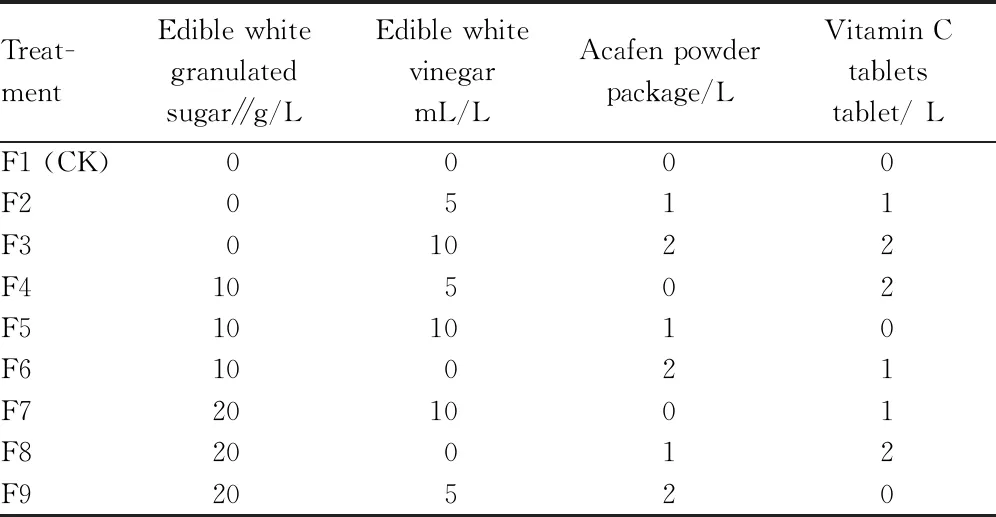
Table 1 Formula of household fresh-keeping solutions for Lilium cut flowers designed by L9(34) orthogonal test
2.3 Measurement indexes and methods
2.3.1
Vase life. The vase life ofLilium
cut flowers referred to the number of days experienced from the 1day of vase insertion to the ornamental grade of 7.2.3.2
Ornamental grade. According to the evaluation criteria of Caoet
al
.(Table 2), the ornamental grade ofLilium
cut flowers was evaluated every day.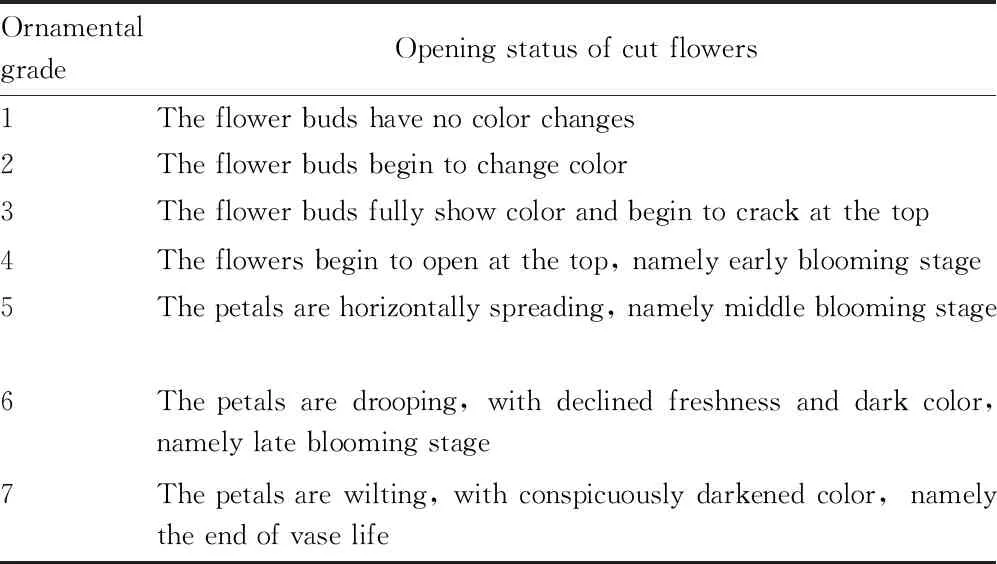
Table 2 Ornamental grade of Lilium cut flowers
2.3.3
Flower diameter of cut flowers. The flower diameter ofLilium
cut flowers was measured by crossing method. The flower diameter of each flower was measured with a ruler every day, and the average value was calculated.2.3.4
Fresh weight of flower branches. The fresh weight of flower branches ofLilium
cut flowers was measured by weighing method. The fresh weight was daily measured by an electronic scale from the 1day of vase insertion (before cut flowers are placed into vase solution, the same below).2.3.5
Water balance value. The weight of bottle+solution+flower branches was measured by weighing method every day. The water loss of cut flowers was the mass difference between two successive weights during the period. The weight of bottle+solution was continuously measured in the same way, and the water absorption of cut flowers was calculated. Water absorption-water loss=water balance value.2.3.6
Soluble protein content of petals. The soluble protein content in petals ofLilium
cut flowers was measured by Coomassie bright blue method on alternate days from the 1day of vase insertion.2.3.7
Malondialdehyde (MAD) content of petals. The MAD content in petals ofLilium
cut flowers was measured by thiobarbituric acid colorimetric method on alternate days from the 1day of vase insertion.2.4 Experimental conditions
Lilium
cut flowers were placed in vases under indoor light, room temperature 15-25℃, and relative humidity 40%-60% during the experimental period.2.5 Data processing
All data were statistically analyzed by Excel 2010 and SPSS 25.0.3 Results and Analysis
3.1 Effects on vase life and ornamental grade
The length of vase life of cut flowers is an important indicator reflecting the fresh-keeping effect of cut flowers during vase period. As shown in Table 3, compared to treatment F1 (CK), various household vase solutions prolonged vase life ofLilium
cut flowers to varying degrees. The vase life ofLilium
cut flowers in treatment F8 was the longest of 12 d, 2.7 d longer than that in treatment F1 (CK). According to Duncan’s new complex range test, there were significant differences in vase life ofLilium
cut flowers treated by nine kinds of household vase solutions, and the vase life ofLilium
cut flowers was significantly prolonged in treatment F8.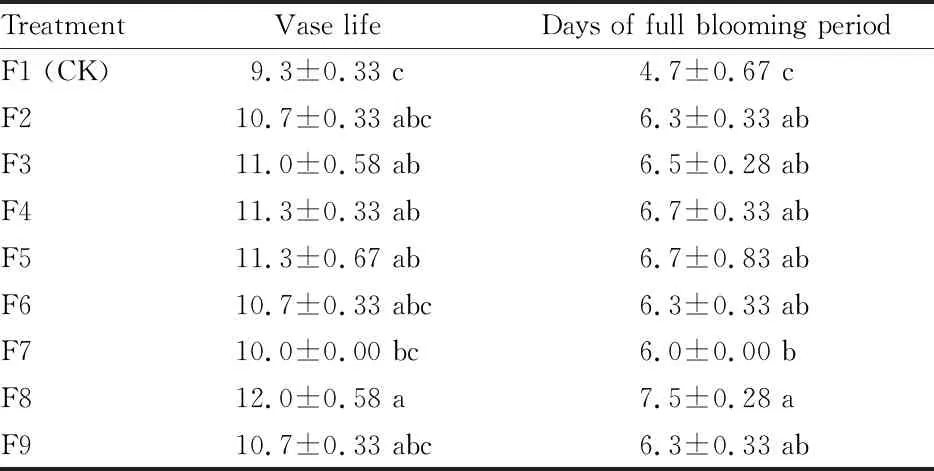
Table 3 Effects of nine kinds of household vase solutions on vase life and ornamental grade of Lilium cut flowers d
The blooming period is the most ornamental stage ofLilium
cut flowers, namely ornamental grade 4 and 5. The longer the blooming period, the higher the ornamental quality. As shown in Table 3, the blooming period ofLilium
cut flowers in treatment F1 (CK) was the shortest of 4.7 d, and that in treatment F8 was the longest of 7.5 d, 2.8 d longer than that in treatment F1 (CK). According to Duncan’s new complex range test, the ornamental quality ofLilium
cut flowers was significantly maintained in treatment F8, and the ornamental value was improved.3.2 Effects on flower diameter
During the vase period, the changes in flower diameter of cut flowers reflect the promotion effect of vase solution on flower bud opening. As shown in Table 4, compared with treatment F1 (CK), various household vase solutions delayed the occurrence time of maximum flower diameter and increased flower diameter ofLilium
cut flowers to varying degrees. The flower diameter ofLilium
cut flowers in treatment F8 reached the maximum of 203.7 mm on the 9day, which had significant difference with those in treatments F1 (CK), F6 and F7. The increment of flower diameter in treatment F8 was the largest of 177.9 mm, which had significant differences with those in treatments F1 (CK), F2, F3, F4, F5 and F6. The increase of flower diameter in treatment F8 was the largest of 704.95%, significantly higher than those in treatments F1 (CK), F3, F4, F5, F6 and F9. In conclusion, treatment F8 significantly promoted flower bud opening, delayed the occurrence time of maximum flower diameter, and improved the ornamental value of cut flowers.
Table 4 Effects of nine kinds of household vase solutions on flower diameter of Lilium cut flowers
3.3 Effects on fresh weight of flower branches
The decrease of fresh weight of cut flower branches is a sign of cut flower withering, and the later the maximum fresh weight of cut flower branches in vase period, the better the fresh-keeping effect of vase solution. As shown in Table 5, the fresh weight of flower branches ofLilium
cut flowers treated by nine kinds of household vase solutions first increased then decreased. The occurrence time of maximum fresh weight of flower branches was the longest in treatment F8, and the fresh weight of flower branches on the 8day of vase insertion was the largest of 38.95 g, maintaining the increment of fresh weight of flower branches for 7 d; followed by treatments F2, F6 and F7 (6 d), and treatments F1 (CK), F4, F5 and F9 (5 d); the increment in treatment F3 was the shortest, 1 d shorter than that in treatment F1 (CK). The daily average fresh weights of flower branches ofLilium
cut flowers treated by different household vase solutions successively were F8>F7>F2>F5>F9>F4>F6>F1 (CK)>F3. The daily average fresh weights of flower branches in treatment F8 was the greatest of 37.9 g, significantly higher than those in other treatments (P
<0.05).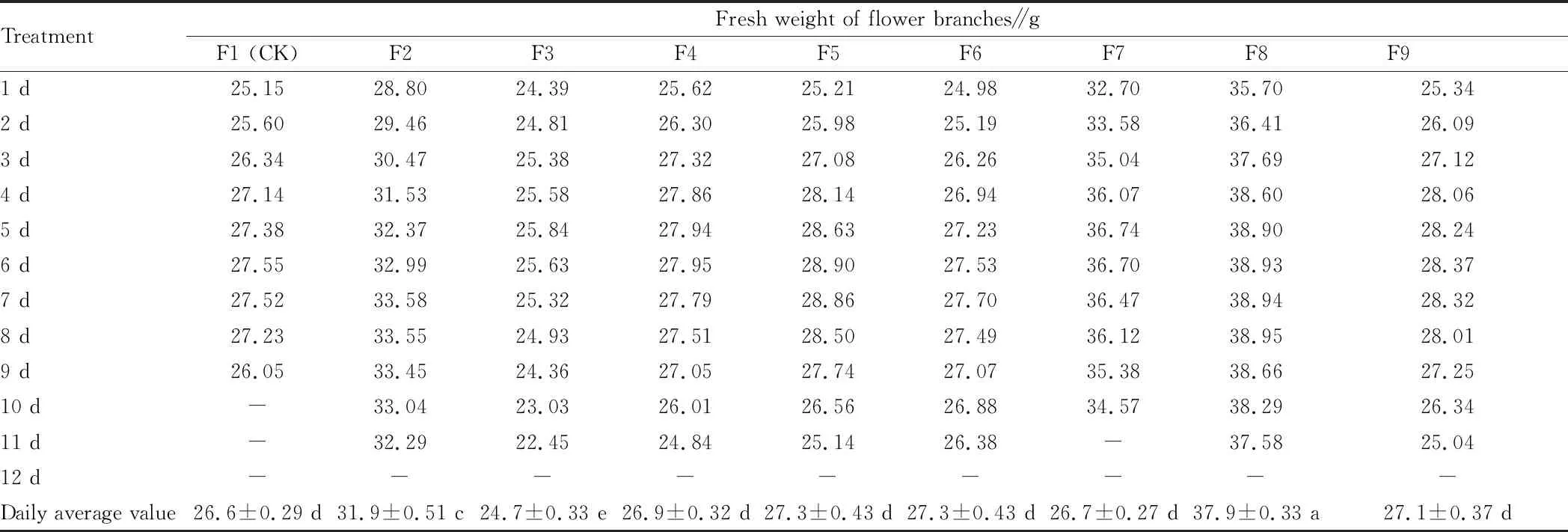
Table 5 Effects of nine kinds of household vase solutions on fresh weight of flower branches of Lilium cut flowers
3.4 Effects on water balance
To ensure high ornamental value of cut flowers, good freshness must be maintained, that is, water absorption is greater than water loss and the water balance value is positive. As shown in Table 6, the water balance values ofLilium
cut flowers in various treatments first increased then decreased, and gradually decreased to negative value. However, the time of decreasing to negative value was different. The water balance values in treatments F2, F6 and F8 decreased to negative value on the 9day of vase insertion, which was delayed by 1 d than those in treatments F1 (CK), F4, F5 and F9. The water balance values in treatments F3 and F7 decreased to negative value 1 d earlier than that in treatment F1 (CK). Therefore, the water content inLilium
cut flowers was improved and the process of cut flower wilting caused by water loss was delayed in treatments F2, F6 and F8.
Table 6 Effects of nine kinds of household vase solutions on water balance value of Lilium cut flowers
3.5 Effects on soluble protein content of petals
The decrease of soluble protein content in cut flowers is one of the manifestations of aging. As shown in Table 7, the soluble protein content in petals ofLilium
cut flowers first increased then decreased in various treatments except treatment F1 (CK). The soluble protein content in petals ofLilium
cut flowers in treatments F4 and F8 reached the maximum on the 5day of vase insertion, which were 41.64 and 45.19 mg/g, respectively. The average daily soluble protein content in petals ofLilium
cut flowers was the highest of 40.05 mg/g in treatment F8, 6.64 mg/g higher than that in treatment F1 (CK); followed by treatments F6, F2, F5, F9, F3, F4 and F7, which were 4.52, 4.36, 4.35, 3.75, 3.57, 3.06 and 2.92 mg/g higher than that in treatment F1 (CK), respectively. Analysis by Duncan’s new complex range test showed that the occurrence of maximum soluble protein content in petals ofLilium
cut flowers was significantly delayed in treatment F8, and maximum daily average value significantly maintained nutrition and delayed senescence of cut flowers.
Table 7 Effects of nine kinds of household vase solutions on soluble protein content in petals of Lilium cut flowers
3.6 Effects on MDA content of petals
The MDA content reflects the aging degree of cut flowers. The higher the MDA content, the faster the aging of cut flowers. As shown in Table 8, the MDA content in petals ofLilium
cut flowers first decreased then increased. The MDA content in treatment F8 decreased the greatest of 58.3%; followed by treatment F6, reaching 55.51%. Analysis by Duncan’s new complex range test showed that the production of MDA in petals ofLilium
cut flowers in treatments F6 and F8 was significantly reduced in the early stage of vase insertion. The average daily MDA content in petals ofLilium
cut flowers in treatment F8 was the lowest of 12.32 nmol/g, indicating that treatment F8 was the most beneficial to delay the senescence ofLilium
cut flowers.
Table 8 Effects of nine kinds of household vase solutions on MDA content in petals of Lilium cut flowers
4 Conclusions and discussion
UsingLilium
"Sorbonne" as the material, nine kinds of household vase solutions were prepared by edible white granulated sugar, white vinegar, akafen powder and vitamin C tablets according to L(3) orthogonal design. The morphological and physiological indexes ofLilium
cut flowers in nine treatments, including vase life, ornamental grade, flower diameter, fresh weight of flower branches, water balance value, soluble protein content and MDA content of petals, were observed, and the results showed that nine kinds of household vase solutions had different fresh-keeping effects onLilium
cut flowers. In treatment F8, the vase life ofLilium
cut flowers was the longest of 12 d; the duration of full blooming period was the longest of 7.5 d; the occurrence time of maximum flower diameter was the longest of 9 d; the increment of flower diameter was the largest of 177.9 mm; the increase of flower diameter was the highest of 704.95%; the duration of maintaining fresh weight growth of flower branches was the longest of 7 d, and the daily average value was the largest of 37.9 g; the negative value of water balance experienced the longest time, which appeared on the 8day of vase insertion; the increase of soluble protein content in petals was maintained for the longest time, up to 5 d, and the daily average value was the highest of 40.05 mg/g; the MDA content in petals decreased by 58.3%, and the daily average value was the lowest of 12.32 nmol/g. Therefore, the household vase solution F8 (20 g/L white granated sugar+1 packet /L acafen powder+2 tablets /L vitamin C tablets) had the best fresh-keeping effect onLilium
cut flowers.Acetic acid is an organic acid, and organic acids and their salts reduce the pH of vase solution, inhibit the growth of microorganisms, promote water absorption of flower branches, increase the fresh weight of flower branches, delay the senescence of cut flowers, and improve the ornamental quality of cut flowers. Xueet
al
.suggested that pyrolignucs acid (containing acetic acid) promoted water absorption and prolonged full blooming stage ofLilium
"Formolongi". However, according to the analysis of this study, the household vase solutions which significantly promoted water absorption of cut flower branches and increased fresh weight of flower branches contained no or little acetic acid (white vinegar). For example, acetic acid was not included in formula F8. It may be that acetic acid is not suitable for preservation ofLilium
"Sorbonne" cut flowers; or the components of pyrolignucs acid are different from that of white vinegar used in this test, thus producing different effects on cut flowers; or the salicylic acid generated by the hydrolysis of aspirin in agafen powder has duplicate effect with acetic acid. The specific reason still needs to be further studied.杂志排行
Asian Agricultural Research的其它文章
- Construction and Exploration of Ideological and Political Education in Crop Breeding Course
- Research and Practice on the Training Mode of Innovative and Entrepreneurial Talents in Colleges and Universities: A Case Study of Academic Association of "Federation of Life Science Research and Innovation"
- Key Points of Simple Cultivation Technique for Whole-plant Silage Maize in Guangxi
- Study on Selection of Wheat Varieties for Noodle Production in Hebei Province and Factors Affecting the Processing Quality
- Breeding of Yuetang 08776, a New Sugarcane Variety Suitable for Mechanized Production
- Effects of Straw and Biochar Returned to the Soil on Soil Physical Properties and pH Value in Cold Rice Region
